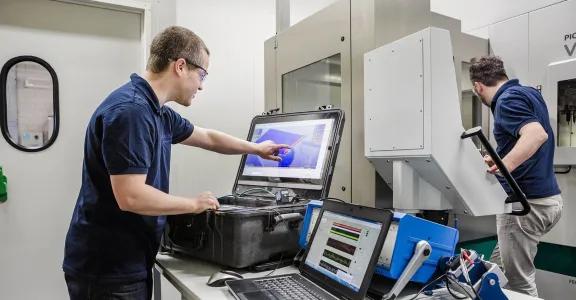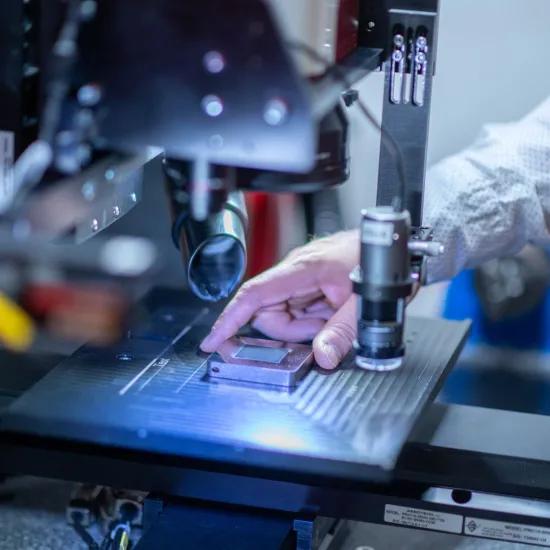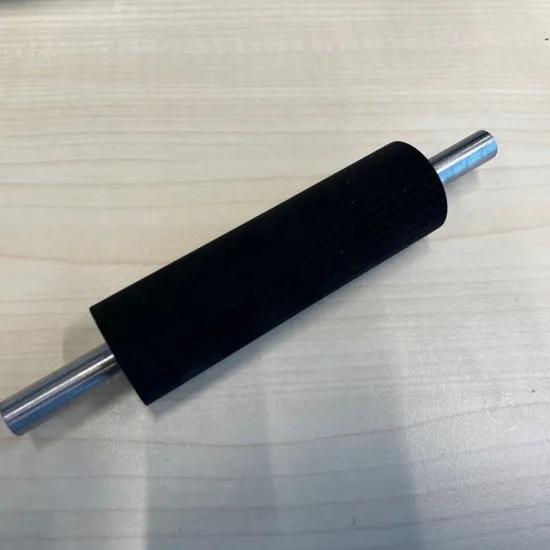In a world of ever-changing demands and customisation, the batch sizes get smaller and smaller every day. This means that adaptive technology is needed more than ever in manufacturing, especially in machining processes. What is it, why is it important and how to achieve an adaptive machining process? And how can we help you?
'Adaptive machining', this term has been around in the manufacturing world for quite some time but can mean different things in different contexts. In general, it describes a technology that adapts manufacturing parameters to suit the changing conditions. In a world of ever-changing demands and customisation, the batch sizes get smaller and smaller every day. This means that adaptive technology is needed more than ever in manufacturing and especially in machining processes. But things can get easily complicated when you consider a zillion parameters to adapt and change during a process like machining.
The image above shows some of the factors that influence the system response in a machining process. Several input parameters, such as the cutting conditions, choice of tools, CAM strategy, ..., will influence the physical responses in the machine tool and especially the forces, vibrations, and temperatures at the cutting zone, which in turn controls the final dimensional and surface quality of the machined part. So, to deal with a problem as complex as this and to adapt the machining process based on the current demands we need a more holistic approach.
Why is this important?
Why do we need to adapt our machining process?
- To ensure every part meets dimensional and surface quality requirements
- To achieve energy and cost-efficient process by minimising process times, tool wear, scrap rates and costs.
How do we do this?
How do you achieve an adaptive machining process? There are three methods we have identified, which will take you towards an adaptive machining world:
1. Knowledge-based
This is generally the first step towards an adaptive machining process. Knowledge here reflects the best practices currently followed by industry or experiences and preferences that could accumulate in a shop over the years. Some level of generic knowledge is necessary to do effective machining on CNC equipment. Not knowing the right speeds and feeds for an operation in a certain workpiece, for example, may lead to hazardous conditions on the shop floor or inefficient, money-wasting processes. Gaining knowledge of the machining process and the effect of input parameters on the process conditions, such as vibrations and forces for different operations and workpiece material, is vital to move towards an adaptive process. So, here necessarily the gained knowledge is driving the decision of the input parameters and the process conditions ensuring the demanded quality is achieved. This knowledge should be captured in databases, tool libraries, speeds and feeds tables, etc. This knowledge can come in handy while automating CAM operations later or to simply be referred at a later stage and implemented in similar situations.
Operations become more consistent and uniformly superior to past experience. Knowledge-based machining facilitates continuous process improvement. In other words, a shop can adapt to new challenges and get better at what it does.
2. Model-Based
A model is a representation, or idealisation of the structure, behaviour, operation, or other characteristics of a real-world system. In the machining context, models can be built to simulate real-world conditions and predict the performances, process deviations, and errors. The modelling and prediction of machining errors are highly significant for the implementation of machining error compensation methods. Models can be built around a specific machine taking into account the machine-tool dynamics, kinematic and thermal aspects. In this way, we can measure several characteristics of the machine tool to build a prediction model for a machining process. Sometimes, initial tests need to be carried out on the machine to build these models. Once these models are built we will be able to predict the outcome theoretically and make informed decisions on the choice of process conditions according to the requirements. This helps to adapt our process based on the needs and hence gets us closer to a fully adaptive machining process.
3. Sensor-based
Machine tools can be equipped with a variety of in-process sensors and transducers. Sensors are usually used for direct measurement of physical quantities to monitor the process continuously during machining. Quantities, such as forces, vibrations, acoustic emissions, temperatures and strains, can be measured to detect deviations in the process. The information from these sensors can be used in the following ways:
- to inform the current status of the system to the operator
- to provide feedback to the system to take corrective actions in real-time
- to build process models based on sensor data and develop Artificial Intelligence of the process.
This sensor data can be further used by a manufacturer to adapt the machining process and to optimise it for the best performance.
A key success factor for Industry 4.0 and IIoT (Industrial Internet of Things) initiatives is the emergence of more and better sensors in machining centres, and even in the cutting tools themselves. These sensors provide the data and connectivity that are the foundation for the ‘factory of the future’ and make the process fully adaptive.
What support do you need?
For certain, 'adaptive' is the future in machining, whether it is knowledge-, model- or sensor-based! At Sirris we will support you in taking all the opportunities it holds for improving your productivity. Therefore, we plan to launch new activities and we would like to hear from you what our focus should be on. So, let us hear from you and fill out this short online survey (max. 10 minutes, Dutch only).
We guarantee your answers and information will be kept confidential and anonymous.
(Picture above: Machining process; factors and system response)





